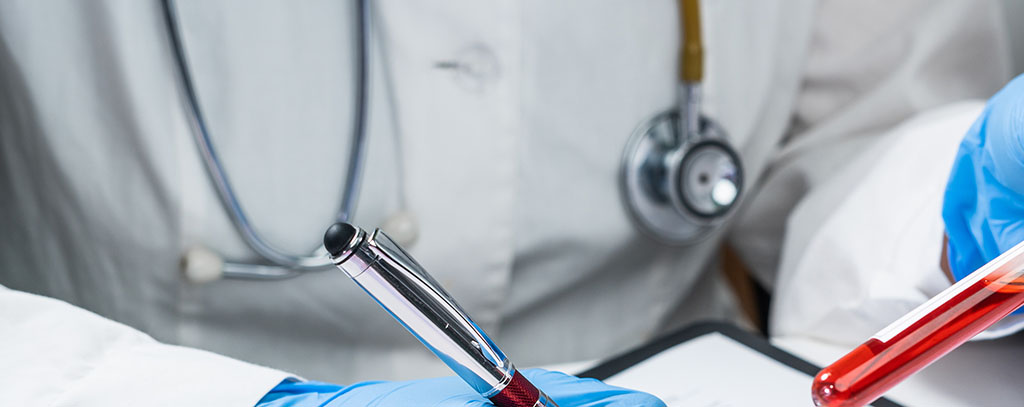


Is Alcohol on a 12 Panel Drug Test: Detection and Factors
May 28, 2023


What Shows Up on a 12 Panel Drug Test: Comprehensive Guide
May 28, 2023Exploring the nuances of a 12 panel drug test, one inquiry that often arises is "What is Mop on a 12 panel drug test?" This blog post will focus on uncovering the role of mop when it comes to detecting certain substances within such an expansive testing system.
We will begin by providing an overview of what constitutes a 12 panel drug test and its benefits for companies that utilize these tests to maintain a safe work environment. Additionally, we will outline the types of drugs typically tested within this comprehensive screening method.
Furthermore, our discussion will cover how to properly perform a 12 panel drug test, including preparation, sample collection, and analysis. As we explore "What is mop on a 12 panel drug test," you can expect to gain insights into both the advantages and disadvantages associated with using mop as part of your company's substance abuse detection efforts.
In conclusion, this blog post aims to provide you with valuable information about the pros and cons related to incorporating mop in your organization's multi-panel drug testing process.
Table of contents
- Understanding MOP on a 12-Panel Drug Test
- Rapid Diagnostic Tests vs Traditional Laboratory Methods
- Incorporating Validity Screens into Workplace Drug Testing Protocols
- Partnering with Certified Laboratories for Non-Negative Result Evaluations
- Frequently Asked Questions What is Mop on a 12 Panel Drug Test
- Conclusion
Understanding MOP on a 12-Panel Drug Test
The Morphine-Opiate (MOP) drug test is an essential component of a comprehensive 12-panel drug screening, designed to detect morphine and its metabolites in urine samples. This low-cost solution helps companies maintain effective workplace drug testing programs while meeting industry standards set by regulatory agencies like SAMHSA.
Importance of Detecting Morphine Use Among Employees
Morphine, an opioid derived from the opium poppy plant, can cause addiction, health problems and impair cognitive abilities if used. Identifying employees who may be using morphine or other opioids is crucial for maintaining workplace safety and productivity. By incorporating MOP tests into their routine drug testing protocols, employers can effectively monitor for signs of opioid use among staff members.
On-site Urine Drug Testing Advantages
- Ease of administration: On-site urine drug tests are simple to administer without requiring specialized training or equipment.
- Rapid results: These tests provide instant preliminary results within minutes, allowing employers to make informed decisions regarding employee fitness for duty.
- Affordability: Compared to laboratory-based methods such as GC/MS confirmation testing, on-site urine drug tests are more cost-effective solutions for organizations looking to implement regular substance abuse screenings.
- Versatility: A 12-panel test not only detects morphine but also screens for other commonly abused substances such as amphetamines, benzodiazepines, and marijuana.
By using MOP drug tests in combination with other drug test dip panels, employers can create a comprehensive workplace drug testing program that promotes safety and compliance while minimizing the risk of substance abuse-related incidents on the job.
Having a comprehensive understanding of MOP on a 12-Panel Drug Test is essential for employers to ensure that their workplace remains safe and drug free. Rapid diagnostic tests offer advantages over traditional laboratory methods, such as extended shelf life and instant results for quick decision making.
Rapid Diagnostic Tests vs Traditional Laboratory Methods
When it comes to drug testing, rapid diagnostic tests offer several benefits over traditional laboratory methods. One of the primary advantages is their lengthy storage period, which typically varies between 12-18 months. This allows companies to stock up on drug test supplies without worrying about them expiring too quickly.
Extended Shelf Life of Rapid Diagnostic Tests
- Cost-effective solution for companies that require frequent drug testing.
- Reduces waste and ensures consistent availability of drug test kits when needed.
- Maintains high-quality results even after prolonged storage periods.
In addition to an extended shelf life, rapid diagnostic tests also provide instant results, enabling swift decision-making regarding employee fitness for duty. This can be especially beneficial in industries where safety is a top priority and any delay in determining an employee's ability to perform their job could have serious consequences.
Instant Results for Quick Decision-Making
- Saves time by eliminating the need to send samples offsite for analysis at a lab facility.
- Allows employers to take immediate action if necessary based on preliminary findings from the initial screening process (e.g., removing employees from safety-sensitive positions).
- Fosters trust among staff members by demonstrating commitment towards maintaining a safe working environment free from substance abuse risks associated with opioid use or other drugs detected during screenings such as those involving MOP (Morphine-Opiate).
It's important to note, however, that rapid diagnostic tests only provide preliminary analytical results and should not be considered conclusive evidence when determining whether someone has used drugs or not. To obtain more accurate findings, companies should consider using Gas Chromatography/Mass Spectrometry (GC/MS) confirmation testing, which will be discussed in the next section.
Rapid diagnostic tests offer a cost-effective and convenient solution for drug testing, providing extended shelf life and instant results. However, GC/MS confirmation testing is the gold standard in drug detection as it provides a high degree of precision with accuracy rates above 97%.
GC/MS Confirmation Testing - The Gold Standard in Drug Detection
The gold standard in drug detection, Gas chromatography/mass spectrometry (GC/MS) confirmation testing is a highly reliable method that identifies specific substances and their metabolites with great precision. When used according to the step-by-step instructions provided alongside test kits, this technique boasts an accuracy rate exceeding 97%, ensuring employers can rely on these results without fear of false positives or negatives impacting their judgment.
High Degree of Precision Offered by GC/MS Confirmation Testing
One major advantage of GC/MS confirmation testing is its ability to accurately detect even trace amounts of drugs within urine samples. This high degree of precision allows companies to confidently identify employees who may be misusing opioids or other substances, helping them maintain a safe and productive work environment. GC/MS tests also offer a reduced chance of cross-reactivity, thus avoiding erroneous positives.
Achieving Accuracy Rates Above 97%
- Familiarize yourself with the test kit: Before conducting any drug tests using GC/MS technology, it's essential for employers and testers alike to familiarize themselves with all components included within each kit as well as accompanying instructional materials.
- Maintain proper storage conditions: To ensure optimal performance from your drug test dip devices throughout their shelf life - typically ranging between 12-18 months - always store them at room temperature away from direct sunlight or extreme temperatures.
- Closely follow procedural guidelines: Adhering strictly to the recommended testing procedures outlined by the manufacturer will help minimize any potential errors that could impact test results. This includes properly collecting and handling urine samples, as well as adhering to specified wait times before interpreting outcomes.
By implementing these best practices, employers can achieve accuracy rates above 97% when utilizing GC/MS confirmation testing in their workplace drug testing programs. In doing so, they can ensure a safer work environment for all employees while maintaining compliance with industry standards set forth by regulatory agencies like SAMHSA.
GC/MS Confirmation Testing provides the highest degree of accuracy and precision in drug detection, making it the gold standard for workplace drug testing. By incorporating validity screens into workplace protocols, employers can further ensure test integrity while still achieving accurate results with MOP drug tests combined with GC/MS confirmation.
Incorporating Validity Screens into Workplace Drug Testing Protocols
To enhance the reliability of drug testing procedures, companies should consider incorporating validity screens into their protocols. These specialized tests are designed to detect adulterants - chemicals intentionally added by individuals attempting to manipulate test outcomes by masking the presence of drugs within urine samples. By using validity screens in conjunction with MOP drug tests and GC/MS confirmatory analyses, organizations can effectively mitigate attempts at cheating while maintaining confidence in the integrity of their workplace drug testing programs.
Detecting Adulterants to Maintain Test Integrity
Adulteration is a common issue faced during workplace drug testing, as some employees may try various methods to alter or dilute their urine samples in order to avoid detection. Common adulterants include substances like bleach, vinegar, or even commercially available products specifically designed for this purpose. Incorporating validity screens helps identify these tampering attempts and ensures that accurate results are obtained from each test.
- Nitrite: A commonly used adulterant found in commercial products; it reacts with certain chemicals present on the dipstick test strip rendering them ineffective.
- pH level: Abnormal pH levels indicate that an acidic or alkaline substance has been added to alter the sample's composition.
- Oxidizing agents: Chemicals such as hydrogen peroxide and bleach can destroy traces of drugs present in a sample making them undetectable by standard tests.
- Creatinine concentration: Low creatinine levels suggest excessive dilution which could be an attempt at hiding drug use.
Combining Validity Screens with MOP Drug Tests and GC/MS Confirmation
In order to maintain the highest level of accuracy in drug testing, it is essential to combine validity screens with both MOP drug tests and GC/MS confirmation. To ensure accuracy, a multi-step approach is necessary to detect any adulteration attempts and provide an in-depth analysis of drug presence or absence.
- Step 1: Conduct a preliminary screening using a rapid diagnostic test like the 12-panel drug test dip, which includes MOP detection.
- Step 2: Perform validity screening on all samples collected during step one; this will help identify any adulteration attempts made by employees trying to cheat their way through workplace drug testing protocols.
- Step 3: For non-negative results obtained from step one, proceed with confirmatory GC/MS testing for accurate identification and quantification of specific substances present in the sample. This final step eliminates false positives or negatives caused by cross-reactivity issues often encountered during initial screenings conducted via rapid diagnostic tests alone.
Taking these measures not only helps ensure accurate results but also demonstrates your company's commitment towards maintaining a safe work environment free from substance abuse-related risks. Partnering with certified laboratories for non-negative result evaluations further strengthens your organization's adherence to industry best practices established by regulatory authorities like SAMHSA (Substance Abuse and Mental Health Services Administration).
Incorporating validity screens into workplace drug testing protocols is essential for accurate results and to ensure that the test integrity remains intact. Partnering with certified laboratories for non-negative result evaluations helps organizations adhere to industry best practices while also providing a reliable means of evaluation.
Partnering with Certified Laboratories for Non-Negative Result Evaluations
To ensure conclusive evidence regarding individual cases, companies should involve certified laboratories during all non-negative result evaluations. This allows employers peace-of-mind knowing they have taken every possible precaution against potential risks posed by undetected opioid misuse within their workforce while adhering to industry best practices established by regulatory authorities like SAMHSA.
Ensuring Accurate Evaluation of Non-Negative Results
Involving a certified laboratory in the evaluation process is crucial for maintaining accuracy and reliability in drug testing results. These labs are outfitted with the latest tech and highly trained personnel to accurately examine samples through complex techniques such as GC/MS. By partnering with these experts, companies can be confident that any non-negative test results will be thoroughly evaluated before making decisions about an employee's fitness for duty.
Adhering to Industry Best Practices
- Maintain clear communication: It is essential to establish open lines of communication between your company and the chosen laboratory partner. This ensures that both parties understand each other's expectations and requirements throughout the entire drug testing process.
- Select a SAMHSA-certified lab: Partnering with a lab that has been certified by SAMHSA guarantees adherence to strict guidelines set forth by this regulatory authority, ensuring accurate and reliable results.
- Create comprehensive policies: Companies should develop detailed workplace drug testing policies outlining procedures for handling non-negative test results, including when to involve certified laboratories for further analysis.
- Educate employees on policy details: Informing employees about the company's drug testing policies and procedures helps create a transparent work environment where everyone understands their responsibilities and expectations.
Incorporating certified laboratories into your workplace drug testing program is an essential step in ensuring accurate evaluations of non-negative results. By following industry best practices, companies can maintain confidence in their drug testing protocols while minimizing potential risks associated with undetected opioid misuse among employees.
Frequently Asked Questions What is Mop on a 12 Panel Drug Test
What does mop mean on drug screen?
MOP stands for Morphine, which is an opioid analgesic commonly tested in drug screens. It indicates the presence of morphine or its metabolites in a person's system. MOP tests are included in 12-panel drug tests to detect potential abuse of prescription opioids or illegal drugs like heroin.
What exactly is on a 12 panel drug test?
A 12-panel drug test screens for twelve different substances, including amphetamines (AMP), barbiturates (BAR), benzodiazepines (BZO), buprenorphine (BUP), cocaine (COC), methadone (MTD), methamphetamine (mAMP/MDMA/MET/XTC/ICE/TINA/P) , opiates/morphine(MOP/OPI300/OPI2000 ), oxycodone(OXY) , phencyclidine(PCP/Angel Dust/Hog/Special K/Illusion ) and tricyclic antidepressants(TCA). This comprehensive screening helps employers identify employees who may be using various drugs that could impact workplace safety and productivity.
What is the most common false positive drug test?
The most common false positive occurs with amphetamine testing due to cross-reactivity with over-the-counter medications containing pseudoephedrine, ephedrine, or phenylpropanolamine. Additionally, certain prescription medications such as Adderall can cause a false-positive result for amphetamines. Confirmatory testing using gas chromatography-mass spectrometry can help rule out these false positives.
What is the most common drug test for employment?
The most common drug test for employment is a 5-panel urine test, which screens for marijuana (THC), cocaine, amphetamines, opiates, and phencyclidine. This basic panel covers the major categories of drugs that are commonly abused and can impair an employee's ability to perform their job safely and effectively.
How do they test for morphine in urine?
Morphine testing in urine typically involves immunoassay techniques such as enzyme-linked immunosorbent assay (ELISA) or lateral flow assays. These tests detect morphine-specific antibodies that bind to morphine or its metabolites present in the sample. If a non-negative result occurs, confirmatory testing using gas chromatography-mass spectrometry (GC/MS) ensures accurate detection of morphine use.
Conclusion
Overall, the use of mop on a 12 panel drug test can be beneficial for companies that require fast and accurate results. Despite the potential drawbacks, such as cost and contamination concerns, mop on a 12 panel drug test is still an effective way to detect multiple substances in one sample. Companies should consider their specific needs when deciding whether or not they want to utilize mop on a 12 panel drug test as part of their overall testing strategy.
If you are looking for reliable drug testing supplies, Halux Diagnostic is the perfect solution. Our 12 panel drug test includes a mop to ensure accuracy and peace of mind.





